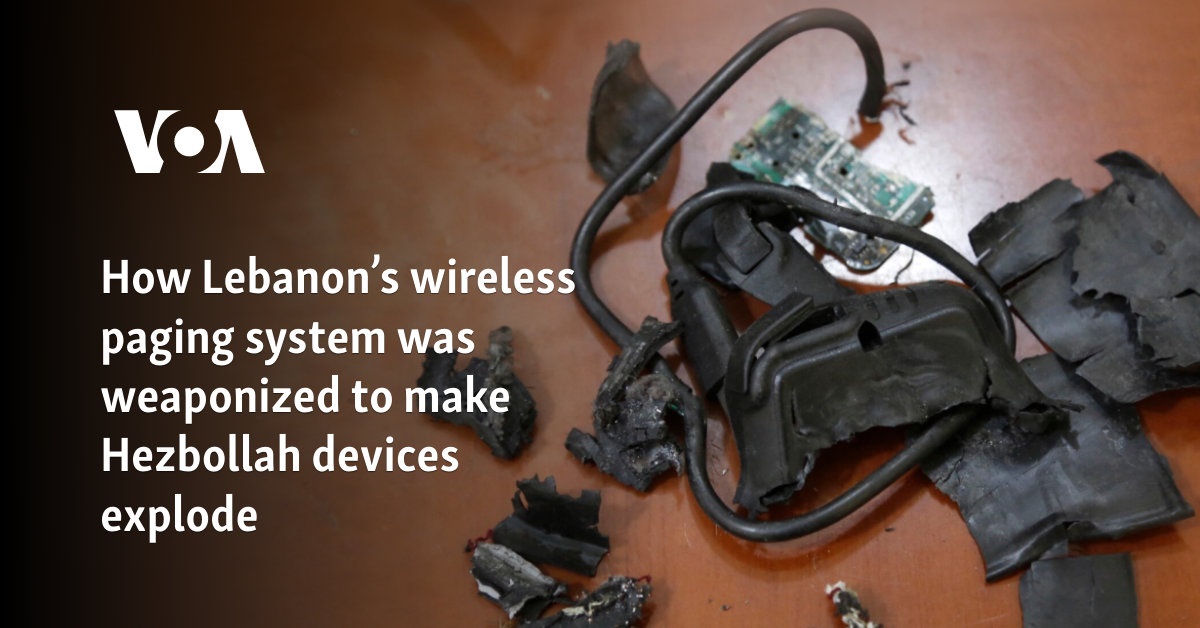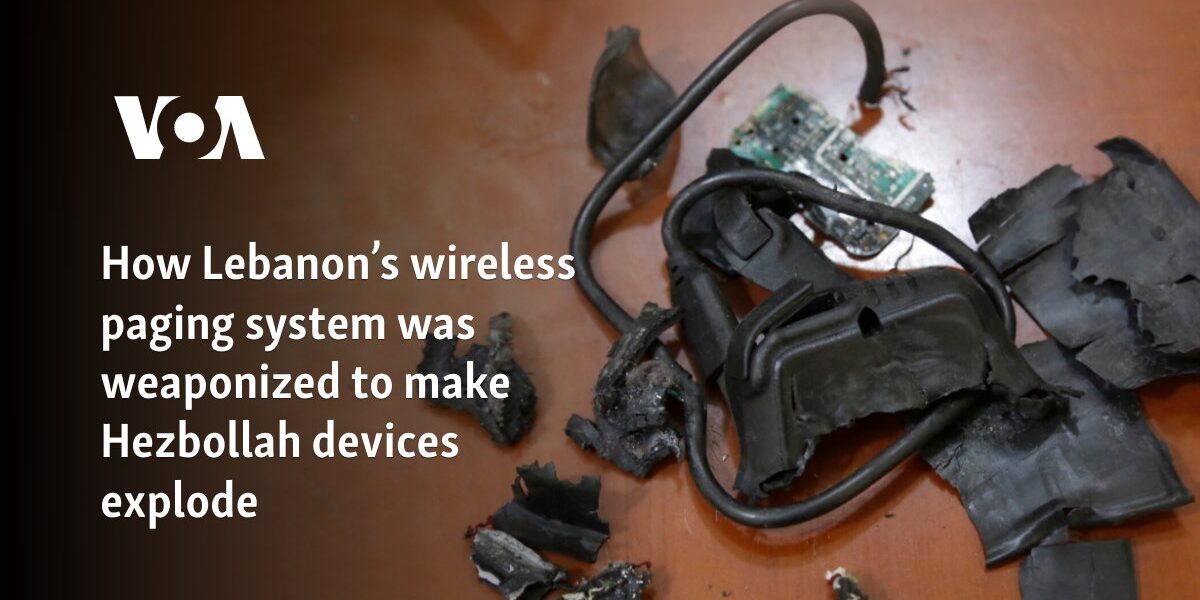How Lebanon’s wireless paging system was weaponized to make Hezbollah devices explode

The simultaneous explosion of thousands of pagers used by Lebanese militia Hezbollah on Tuesday was the result of an unprecedented weaponization of a wireless paging system, in which rigged devices detonated upon receiving a coded signal transmitted by radio frequency.
The Lebanese government said the attack on pagers used by Hezbollah, a U.S.-designated terror group, killed at least 12 people and wounded more than 2,750 others. It said another 25 people were killed and hundreds more were wounded on Wednesday when walkie-talkies used by Hezbollah also exploded simultaneously.
Lebanon, Hezbollah and its patron Iran blamed their enemy Israel, whose government has neither confirmed nor denied responsibility.
Hezbollah’s rigged pagers were connected to a wireless paging system in which coded signals are sent via radio frequency, or RF, technology from transmitting devices to pagers, which are only capable of receiving and decoding RF signals.
The process of sending a signal in a wireless paging system built for a wide area begins with the sender entering an alphanumeric message into a central paging terminal, also known as a transmitter controller or paging initiator device.
That message is encoded into an RF signal that the controller device sends to a network of transmission towers, which relay the signal to paging subscribers located within a certain geographic range of the towers.
When the pagers are turned on, their built-in antennas capture the RF signal and feed it to internal radio receivers, which send the encoded information to processors that decode and reproduce the original alphanumeric message sent from the controller.
If the pagers are tuned or programmed to receive the message, they notify the users of the incoming message by beeping or vibrating and displaying it on the screen.
Bryson Bort, a senior fellow at George Mason University’s National Security Institute and founder of U.S. cybersecurity company Scythe, said in a VOA interview that the perpetrator of Tuesday’s attack likely rigged Hezbollah’s pagers with explosive material and programmed them to explode before they were delivered to their Hezbollah users.
“Whoever did this reprogrammed the pagers so that when they receive a particular code, they send a command to a detonator to trigger the explosive,” Bort said. “If the signal is received by pagers that were not rigged to explode, nothing happens.”
The controller device that initiated the signal to detonate the pagers likely was registered to operate in Lebanon’s wireless paging system and utilize its transmission tower infrastructure, Bort said.
“Once the perpetrator of the attack has a registered controller device, they are like any other regular user of the network and can blend in, using Lebanon’s commercial infrastructure in the way that it is designed to work,” he said.
Neither the Lebanese government nor Hezbollah has identified the device that initiated the signal triggering the pager explosions. Authorities have said they are investigating.
Bort said it was unlikely that the signal came from a controller device registered in Israel or that it was relayed to pagers in Lebanon using Israeli transmission towers.
“I consider that to be the less-likely approach, because it would be obvious to authorities with signal-tracking capabilities that that the signal is coming from Israel,” Bort said.
“Also, imagine the amount of power that Israel would need to transmit a signal over the entire country of Lebanon. Israel wouldn’t be able to guarantee that all of Hezbollah’s thousands of pagers would receive the signal with that kind of approach.”
Source: voanews.com




